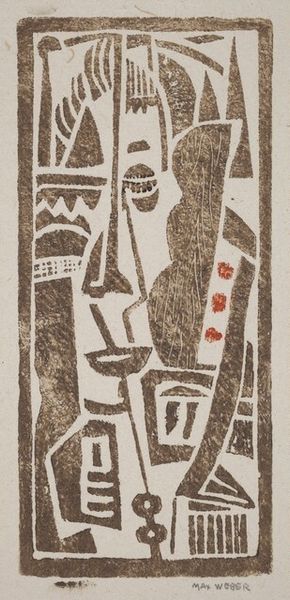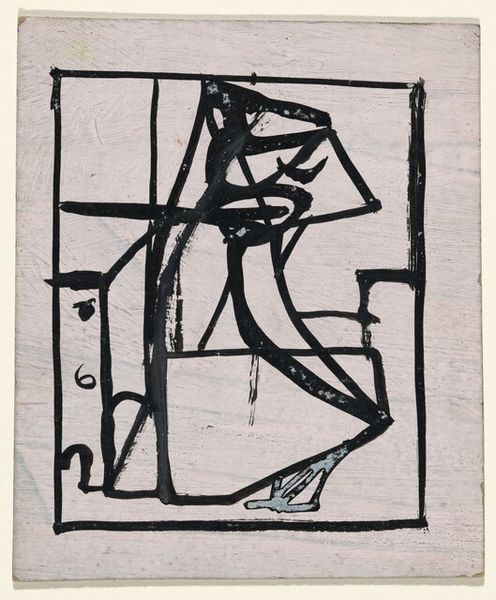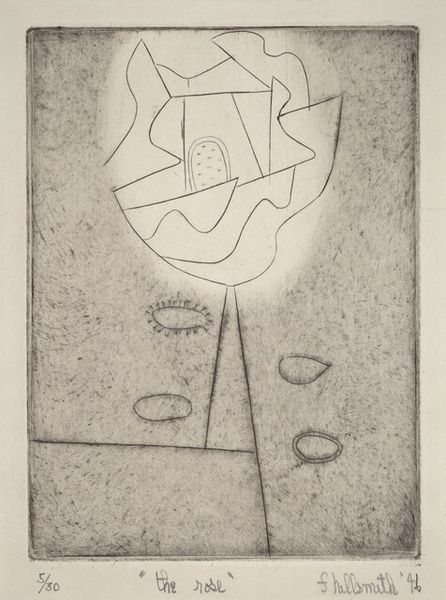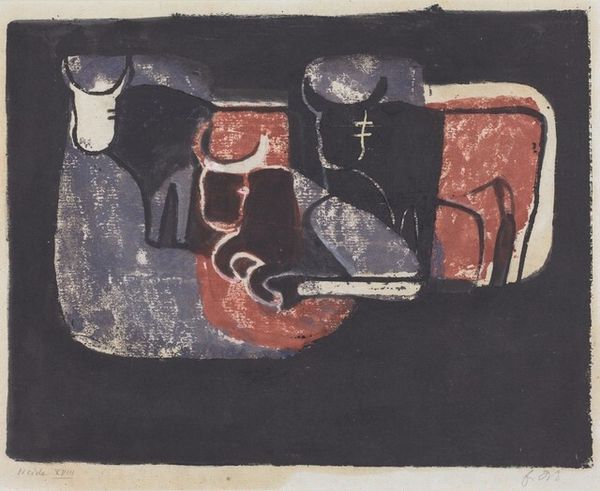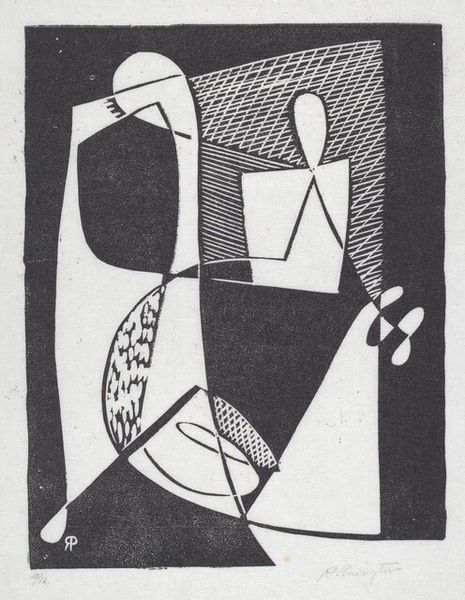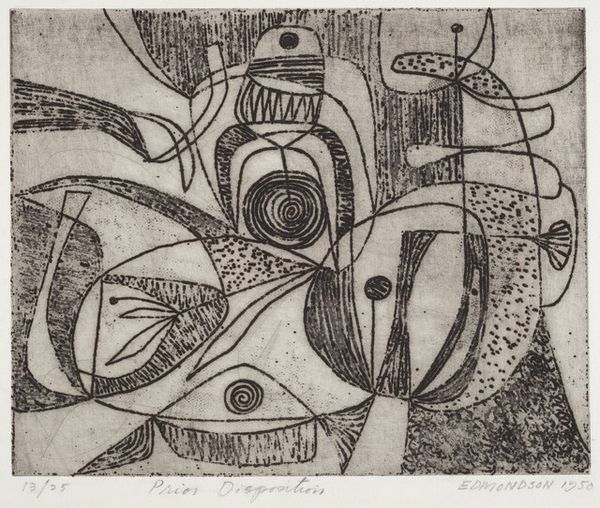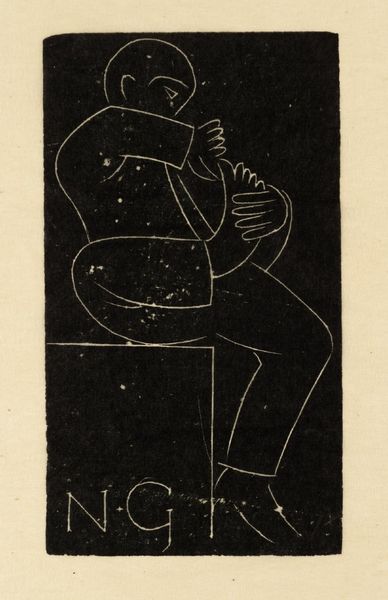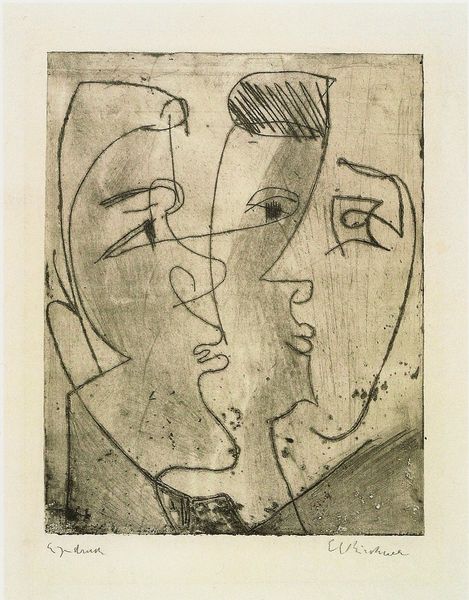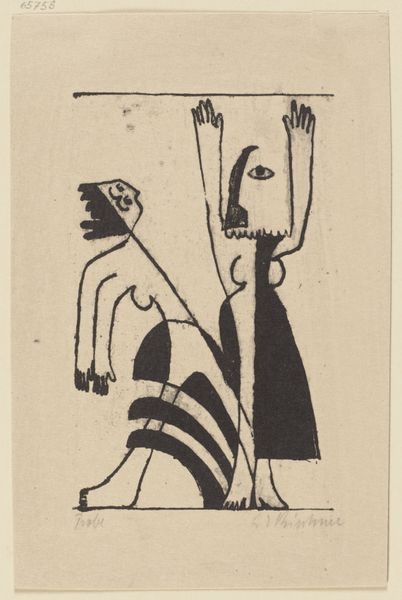
print, etching
# print
#
etching
#
landscape
#
geometric
#
abstraction
#
modernism
Dimensions: plate: 252 x 204 mm sheet: 361 x 292 mm
Copyright: National Gallery of Art: CC0 1.0
Curator: I’m struck by how intimate this print feels; it's got the air of something deeply personal. Francis Kaihatsu crafted this etching, titled "Landscape with Figure," back in 1953. Editor: Immediately, I am captivated by its balance, its restrained palette further emphasizing a structured, almost architectural composition that defies conventional landscape depiction. Curator: It does feel like a puzzle, doesn't it? More mental landscape than physical one. I see familiar shapes—a house perhaps, stylized nature, maybe even a face—all hinting at stories half-remembered, dreams just out of reach. Do you see something similar in how Kaihatsu deconstructs visual elements? Editor: Absolutely, but his process appears methodical. Observe how he employs geometric abstraction to dismantle and reassemble the visual field. It’s like dissecting landscape elements, reducing them to their structural essence, and the figure... where exactly is that ‘figure’? Perhaps the figure *is* the landscape itself, anthropomorphized, mirroring human structure and emotion through form. Curator: The ‘figure’ you describe feels lonely, somehow. There's a tension between that cool detachment you mentioned and something very vulnerable here. Is it just me feeling the contrast between his modern technique with a kind of ancient soul searching? Editor: Indeed. Semiotics helps in deciphering the image’s coded meanings. It reflects Modernism’s post-war anxiety—a longing for simplicity yet complexity in form reflecting broader existential tensions. Look how the tonal variations provide this sense of depth, that also creates uncertainty. It’s really compelling, and speaks so clearly to this fractured perception of reality and nature. Curator: Looking at it, my mind wanders to postwar Japan. The artist likely imbues a response to a disrupted environment, finding ways to put things together, like a kintsugi repair of the world. And I wonder, what did "landscape" even mean after so much devastation? Perhaps finding humanity is finding the landscape. Editor: Your perspective provides compelling emotional insight. My focus on form and structure has, admittedly, abstracted me slightly from those profound themes. Seeing both our viewpoints side by side… now that’s an experience enriched by difference.
Comments
No comments
Be the first to comment and join the conversation on the ultimate creative platform.


